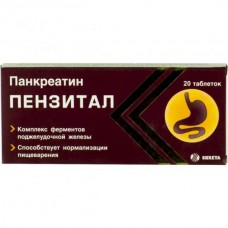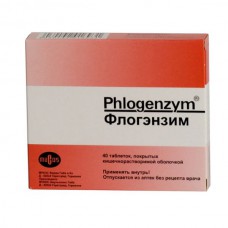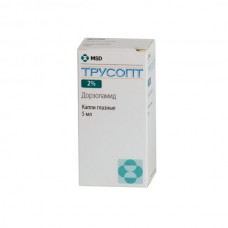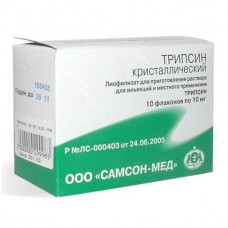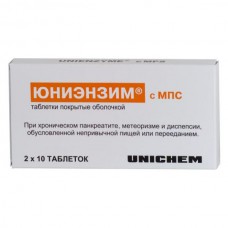Enzymes
Digestive enzymes involved in the digestion of proteins (pepsin and trypsin), carbohydrates (amylase), fats (lipase) and their preparations are widely used as a means of substitution therapy with insufficient secretion of gastric and intestinal glands, pancreas. As the drugs used pepsin, natural gastric juice, Pancreatin, and also a number of combined forms (Panzinorm Forte, Mezim Forte, Festal, etc.).
This group included preparations of hyaluronidase, proteolytic enzymes (and their antagonists), carbonic anhydrase inhibitors (acetazolamide, dorzolamide, brinzolamide), etc.
The carbonic anhydrase enzyme catalyzing the reversible hydration reaction of carbon dioxide and dehydration of carbonic acid. As the formation of carbonic acid quickly dissociates with formation of protons and bicarbonate ion. The carbonic anhydrase is syncopated with zinc content of 0,33–0,34%. In humans this enzyme exists in a variety of isoenzyme forms — carbonic anhydrase I (CA-I) and carbonic anhydrase II (CA-II), the most active of which is KA-II. Contains the carbonic anhydrase in the red blood cells and also in cells of other tissue (including kidney, ciliary body of the eye, pancreas, gastric mucosa, parotid glands). Usually, this enzyme is concentrated in the cells and not detectable in tissue fluids.
Inhibitors of carbonic anhydrase used to treat glaucoma (including in the form of instillation form brinzolamide, dorzolamide). Some carbonic anhydrase inhibitors (acetazolamide) are used as diuretics (see DIURETICS), particularly when edema of cardiac origin and as an adjuvant in the treatment of epilepsy. The diuretic effect of carbonic anhydrase inhibitors is due to inhibition of this enzyme in the kidney with consequent impairment of bicarbonate reabsorption in the proximal renal tubules.
Inhibition of carbonic anhydrase ciliary body of the eye leads to a decrease in the secretion of intraocular fluid (mainly due to a decrease in the formation of bicarbonate ions with subsequent reduction in sodium transport and liquid) and to lower intraocular pressure.

